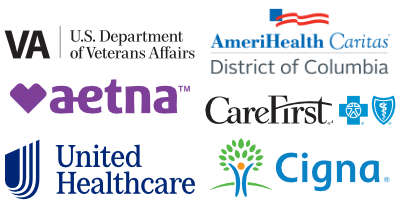Sciatic nerve pain is a common condition, and it can be a very debilitating one. Typically caused by an impingement of sciatic nerve in the lower back, pain will be felt radiating down the buttock and leg. There are many treatment options for sciatica, and acupuncture is among the most gentle, natural and effective. Acupuncture both relieves acute sciatic nerve pain and is able to resolve the condition entirely over time. Read on to learn more about acupuncture for sciatica, including where needles are placed, case studies, and the range of treatment options.
What causes sciatica pain
Sciatic pain is a symptom of an underlying medical condition of the lower back area. The sciatic nerve originates in the lower back, runs through the buttocks, and down the back of each leg. Portions of the sciatic nerve branch to various areas of the leg, like the calf or toes.
Sciatic pain occurs when there is a structural impingement or compression of the sciatic nerve in the lower back. This occurs when there is an acute injury to the lower back. Or it can be the result of long-term degeneration of the lumbar area. The location of the painful symptoms in the leg depends on where in the lower back the sciatic nerve is being compressed.
Common causes of sciatic pain
- Degenerative disc disease (the breakdown of the discs that provide cushion between the vertebrae)
- Lumbar spinal stenosis (narrowing of the spinal canal)
- Spondylolisthesis (a fracture in the wing-shaped portion of a vertebrae that causes it to slip forward over another vertebrae)
- Pregnancy (increased pressure on the lumbar spine)
- Herniated lumbar disc ( (slipped disc), Bulging disc, Pinched nerve (the cushion between vertebrae is pushed to the outer portion of the spine)
Different types of sciatic pain
Sciatic pain (sciatica) usually affects only one side of the body, with the pain extending from the lower back/buttocks down the leg. When asked to specify what they’re feeling, our patients with sciatic pain describe the following:
- Pain in the buttocks or leg that worsens with sitting
- Burning, tingling, or searing pain down the leg
- Weakness, numbness or difficulty moving the leg or foot
- Constant pain on one side of the buttocks
- Shooting, sharp pain which makes it difficult to stand
How does acupuncture help sciatica pain?
By inserting small needles into specific sites on the body, the needles trigger a response from the nervous system. This response from the nervous system leads our brain to:
- release a cascade of natural painkillers (endorphins and enkephalins),
- increase blood flow to the painful area,
- relax the muscles in the surrounding area, reducing compression or impingement.
For more details, read our full article on how acupuncture works physiologically for pain relief.
Acupuncture points for sciatica
Where will the needles go for sciatica? Different acupuncturists will use different protocols based on their background and the patient’s particular constellation of issues. Our clinic will often use a protocol that involves insertion of needles in the following areas:
- inside of the lower calf/ankle
- along the wrist/forearm area
This would be considered “distal” needling as opposed to “local” needling. With distal needling, acupoints are inserted in locations different–or at a distance–from the site of pain. Chinese medicine makes use of the connections between different body areas, which means that points in the above areas are able to send blood flow to areas appropriate to help heal sciatic nerve pain.
How do acupuncturists choose acupoints? Find out here.
Using acupressure for sciatic nerve pain
Acupressure points for sciatica are something to consider for added relief at home. Acupressure uses the finger to apply sustained pressure onto acupoints, stimulating the nervous system without needles. If you are interested in using acupressure at home between treatments, speak with us at one of your acupuncture sessions. If appropriate, we can show you acupressure points that you can use for your sciatic pain, either on yourself or with the help of a friend or family member.
How we treat sciatic pain at Transformational Acupuncture
The most common treatments for sciatic pain involve:
- surgery(to repair the underlying structural issues in the lower back)
- epidural steroid injections,
- pain killers
- hot/cold therapy.
Regular acupuncture treatments offer a safe and gentle alternative for pain management. A large proportion of our patients with sciatica have responded very well to acupuncture. This included patients seeking both:
- acute pain relief,
- help with managing and resolving their condition over time.
While acupuncture cannot heal the structural issues of the lower back that cause sciatica, it is a useful, side-effect free treatment for the management of the pain.
At Transformational Acupuncture, we treat sciatic pain using the Balance Method style of acupuncture. For more information, read our full article about the Balance Method and how we select acupuncture points for pain relief.
Typically we treat sciatic pain by placing acupuncture needles along the inside of the lower calf/ankle and along the wrist/forearm area. We take a two-pronged approach, targeting:
- the lower back, to increase blood flow and muscle relaxation around the lumbar vertebrae;
- The sciatic nerve, to influence muscle relaxation and blood flow regulation along the pathway of the pain in the leg.
Sciatica case studies from our acupuncture clinic in Washington DC
Acupuncture points for treating sciatic pain vary, depending on the exact location and pathway of the pain. Below is a case study from our acupuncture clinic illustrating how we’ve helped patients to manage sciatic pain.
“AD”, 40 years old from Washington DC, with right-sided Sciatic Pain:
AD started having sciatic pain about 1 year before she came into the clinic. Like many people, the pain started suddenly, and didn’t have any obvious cause. It didn’t respond well to physical therapy or chiropractic work, and she didn’t want to continue relying on Advil long-term.
The pain level was around 7/10 when waking up in the morning. It improved over the course of the day. But then the pain would worsen again by the end of the day with so much sitting at the office.
Due to the location of the sciatica, we chose acupuncture points on the hands and forearm, including Small Intestine 2, 3, and 4, and San Jiao 3, 4, 5 and 6. Learn more about how we select acupuncture points.
Her pain was reduced by 50% after the first session, which lasted for a few days. She then came in 2 times per week for 3 weeks, followed by once per week for 4 weeks. At that time her sciatica was reduced by 100% on some days, and by 75-80% on other days.
Research on the effectiveness of acupuncture for sciatic pain
Meta-analysis shows acupuncture a clinically relevant option for sciatica
This meta-analysis compared 122 different studies to determine the clinical effectiveness of various treatment strategies for sciatica. Researchers found a statistically significant improvement in patients who received acupuncture.
This study shows us that there are a variety of options to consider when treating sciatic pain. Acupuncture can be of particular therapeutic value, especially when coupled with other pain-management techniques.
You can find more information on the US National Library of Medicine article Comparative clinical effectiveness of management strategies for sciatica: systematic review and network meta-analyses.
Acupuncture shown to have pain-relieving effect on sciatica
This study compared 2 methods for treating sciatic pain using acupuncture. Method 1 used 1–2 needles in the gluteal area. Method 2 called for several needles at various points on the body along with 1–2 needles in the gluteal area. Researchers found both methods to be successful, with method 1 providing slightly more relief. This finding is an indication that very few needles can be used to treat sciatic pain, as long as proper point selection is maintained.
You can find more information on the US National Library of Medicine article Randomized controlled study on proximal needling for sciatica.
Chinese herbal medicine for sciatic pain
With a full Chinese herbal pharmacy, our patients with sciatic pain can also reap the benefits of Chinese herbal medicine. We custom formulate every herbal preparation for the patient’s specific condition and constitution. To decide which herbs will make up the mixture, we use the following diagnostic techniques:
- analyze the patient’s symptoms,
- measure the pulse,
- observe the tongue.
While each formula will vary depending on the needs of the individual, the herbs listed below are examples of ingredients commonly found in sciatic pain formulas. As a group, these herbs function to alleviate pain, reduce inflammation, and regulate blood flow.
For those of you in the Washington DC area with sciatic pain

Consider first trying out some of the more natural and less invasive options, rather than opting for something like surgery or injections straight away. If you are considering acupuncture, we recommend giving it at least four sessions in a relatively short span of time in order to gauge its effectiveness.
If you are interested in trying acupuncture for sciatica at our clinic, here are some next steps:
- Read more about our acupuncture sessions.
- Let us help you check if you have acupuncture coverage: If you have an insurance policy with Aetna, United Healthcare, or BCBS/CareFirst, we can check your policy for you. Just fill out or short online Acupuncture Benefits Verification Form. It’s all online.
- Find out what happens at your first appointment.
- Schedule an appointment online or give us a call at 202.297.7404.
- Contact us if you have any questions.







